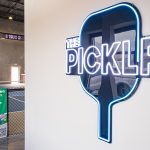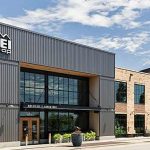Deloitte’s 18th Annual Back-to-School Survey finds that spending for K-12 students is expected to remain flat at $30.9 billion this year. Parents surveyed expect to spend $570 per student in grades K-12, down $16 year-over-year. Overall, parents will buy essentials, trading down on brands and retailers, and spreading out their B2S purchases over time.
Despite higher prices in nearly all categories, this year’s spending by parents for K-12 students is expected to be 7 percent lower than in 2021, a recovery year for back-to-school spending amid the pandemic.
“Parents are laser-focused on preparing their children for the school year, but we expect back-to-school spending to remain flat amid economic headwinds and financial concerns across income groups. Consumers are expecting higher prices on back-to-school items this year, so they’re looking for ways to save. Despite these pressures, children’s influence on their parents’ spending remains strong, and extracurriculars remain a priority for most parents, who continue to value their importance to a child’s well-being,” said Natalie Martini, vice chair and U.S. Retail & Consumer Products sector leader at Deloitte.
Cautious Approach to Back-to-School Spending
- More than half (52 percent) of surveyed parents reported being anxious about the potential for higher prices on B2S items. The same percentage plans to cut back on other expenses, such as dining out and entertainment, to make room in their budgets for back-to-school spending.
- Respondents expect to increase their spending on clothing and accessories, up 6 percent to $13.4 billion. Spending on all other categories is expected to decline, including technology (-8 percent), school supplies (-3 percent), and other home and health products, such as personal hygiene items and educational furniture (-12 percent).
- Lower-income parents plan to spend 10 percent more year-over-year, while middle- and higher-income parents plan to spend 7 percent and 9 percent less, respectively.
- Two-thirds (68 percent) of lower-income families (those earning $ 50,000 per year or less) said they will spend more due to higher prices.
- Half (51 percent) of middle-income families (those earning $50,000 to $99,000 annually) reported having less money to spend.
- While 60 percent of higher-income families (those making $100,000 or more) indicate they are worried about the economy.
- Despite keeping an eye on budgets, 62 percent of surveyed parents said their kids often influence them to spend more, and 57 percent said their kids could entice them to splurge on a first-day-of-school outfit.
- While extracurricular activities remain a priority, surveyed parents plan to cut costs. Nine in 10 plan to enroll their kids in extracurricular activities, spending an average of $532 per child on fees and equipment, down $50 year-over-year. Respondents stated that extracurricular activities are important for a child’s mental health (87 percent) and for developing skills that artificial intelligence (AI) cannot replicate (83 percent).
- Deciding what to make for school lunch is a pain point for 45 percent of parents surveyed, with 42 percent of respondents stating that their kids bring lunch from home on most school days. They note that a monthly average of $164 is a reasonable amount to spend on daily school lunches.
Savvy Shopping Makes The Grade
Parents who participated in Deloitte’s survey aim to ensure their children have what they need for the upcoming school year and plan to utilize value-seeking skills to obtain it, which means making cost-conscious choices, deal-driven purchases and sacrificing convenience.
- Sixty-one percent of surveyed parents expect their back-to-school spending to occur by the end of July, down from 66 percent in 2024, with 49 percent planning to spread out their purchases over time.
- Nearly half (46 percent) plan to shop during mid-July promotional events, the same as in 2024.
- Mass merchant retailers continue to lead the way among surveyed respondents, with more parents planning to shop there, an increase of six percentage points year-over-year. Online and off-price retailers, dollar stores, and warehouse membership clubs follow them.
- Parents plan to shop at an average of five retail formats. According to survey respondents, the main reason for spending the most at a retailer is value for the money (54 percent).
- K-12 parents surveyed showcase value-seeking in various ways.
- 71 percent are willing to wait longer for delivery if it means lower or no shipping costs. Demand for standard shipping has increased by up to 76 percent, compared to 63 percent in 2024.
- 26 percent of parents surveyed plan to buy back-to-school items using cashback websites.
- Parents have different strategies for purchasing supplies to get through the school year. Half (48 percent) of those surveyed plan to save money by buying in bulk, while 39 percent will buy smaller packs and replenish as needed.
- Those looking for deals may sacrifice loyalty, with 75 percent of surveyed respondents saying that they will shift brands if the preferred brand is too expensive (versus 67 percent in 2024), 65 percent said they will shop at more affordable retailers (versus 62 percent in 2024), and 50 percent will shop for private labels over name brands (flat year-over-year).
- The average spend of those who shop primarily online is expected to be $601, $100 more than that of parents who plan to shop mostly in-store.
Younger Parents Rewire Some Shopping Patterns
As younger generations seek value, they turn to social media to find the best deals and compare prices.
- Among those surveyed, 75 percent of Gen Z parents and 46 percent of Millennial parents plan to use social media for their B2S shopping and are likely to spend 1.8 times more compared to others who do not use social media.
- Younger parents are more likely to use social media sites to complete their purchases.
- Half (51 percent) of Gen Z parents plan to leverage social platforms to look for deals, compared to 21 percent of all shoppers.
- 32 percent of parents said influencer content is more trustworthy than brand content, and that number climbs to 59 percent for Gen Z.
- One-third (33 percent) of parents surveyed plan to use GenAI for B2S shopping, yet only 22 percent said they trust it. Meanwhile, Gen Z overwhelmingly embraces AI when shopping for B2S (67 percent), twice the rate of Millennials (34 percent) and Gen X (29 percent).
- Half (48 percent) of surveyed parents plan to buy U.S.-made products as much as possible, and this sentiment is expected to be higher among Gen Z parents (62 percent).
“This year, parents are strategically approaching back-to-school shopping by spreading out purchases, leveraging promotions and shopping across multiple discount retailers to help them maximize their budgets. Value for the money is the top driver of retailer choice, and parents are increasingly willing to switch brands or retailers to find the best deals. Meanwhile, younger generations are embracing technology and social media to hunt for bargains, with Gen Z parents embracing social commerce, digital platforms and AI at a higher rate as they hone their value-seeking strategies,” said Brian McCarthy, principal of Retail Strategy at Deloitte Consulting LLP.
To download the full survey, go here.
Image courtesy Deloitte














